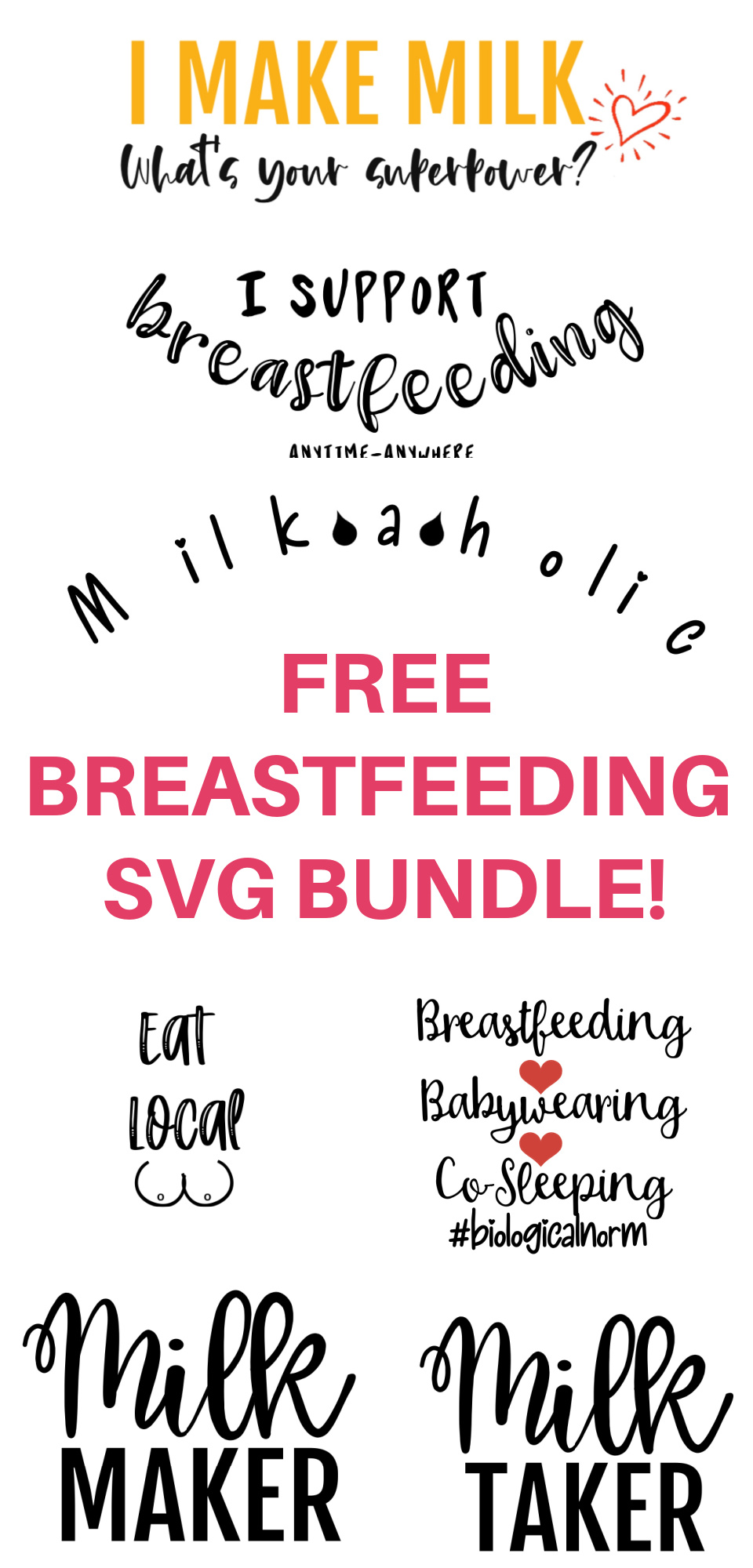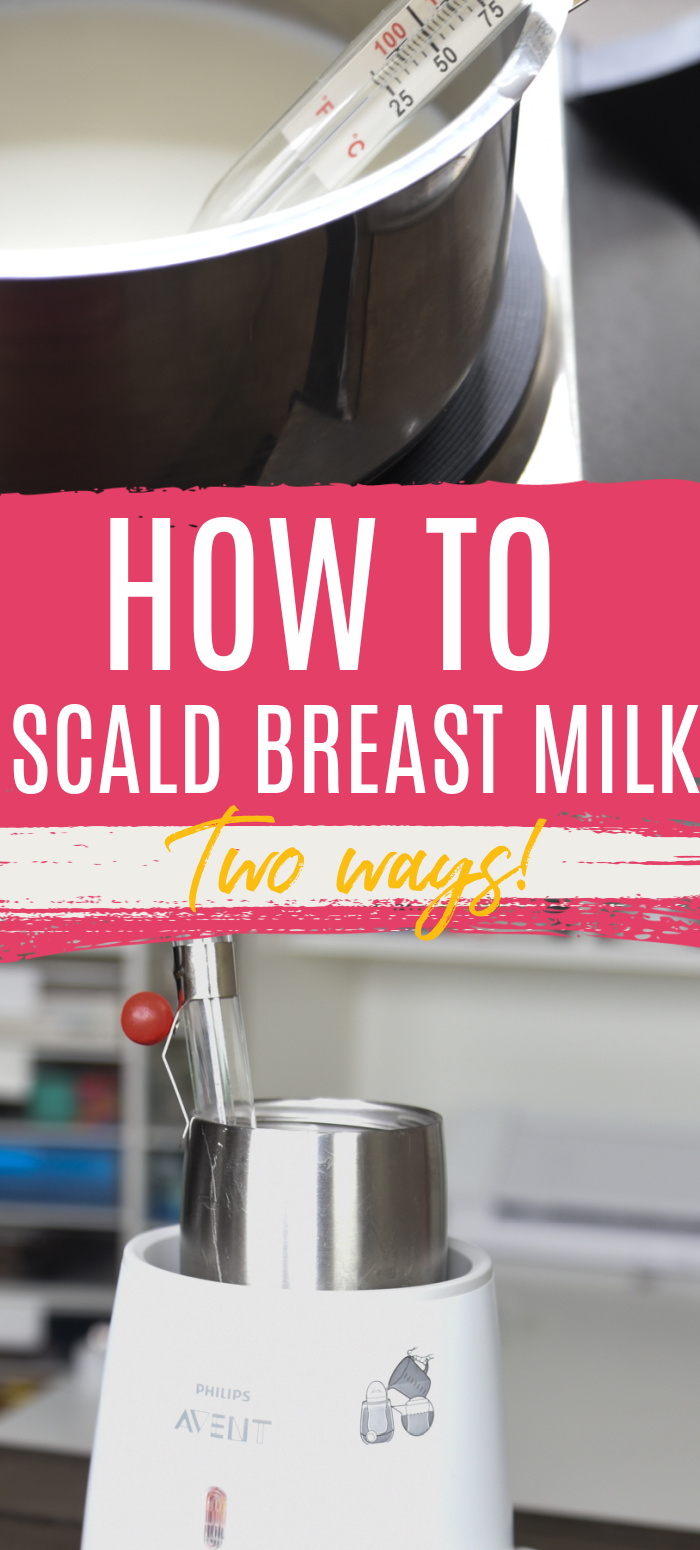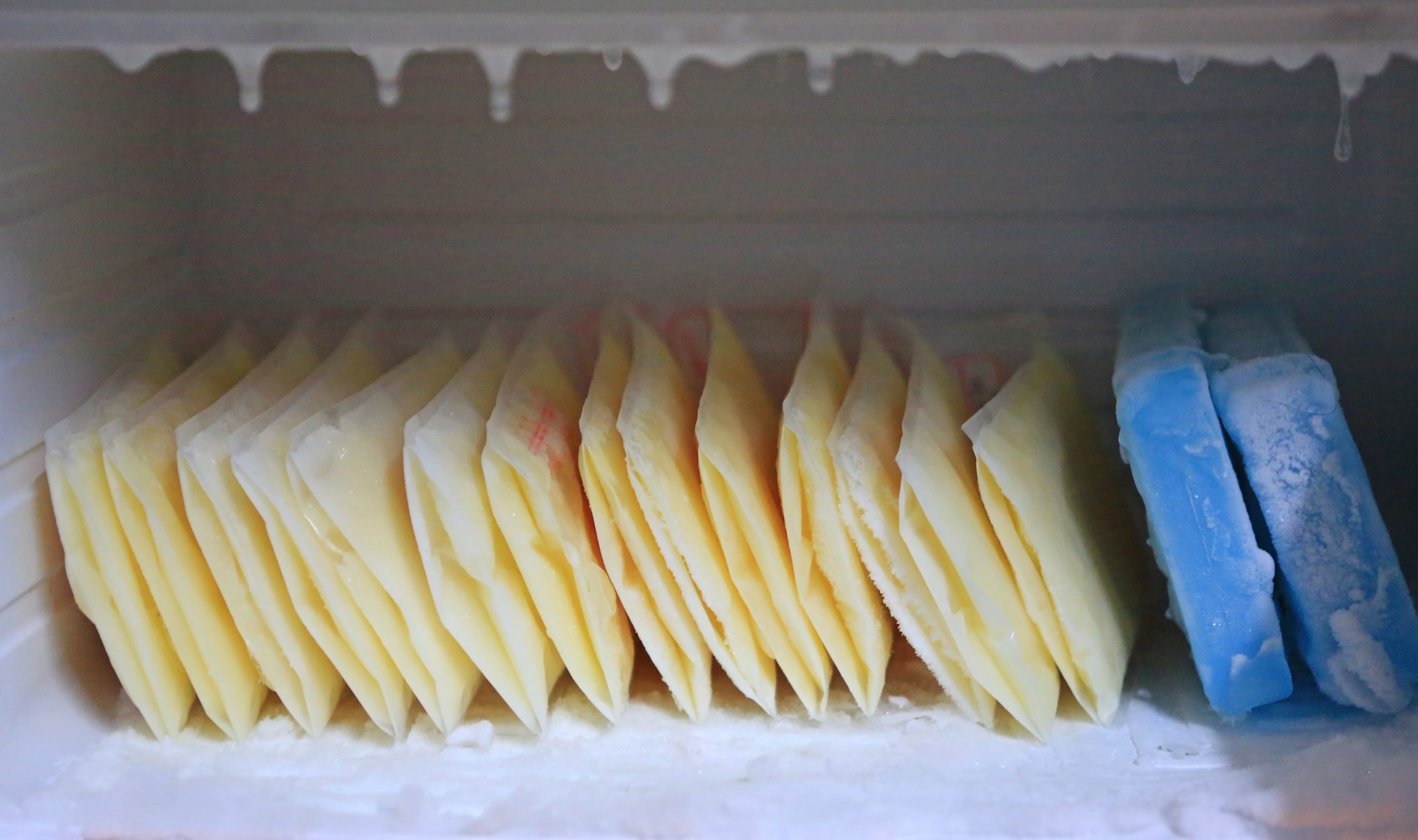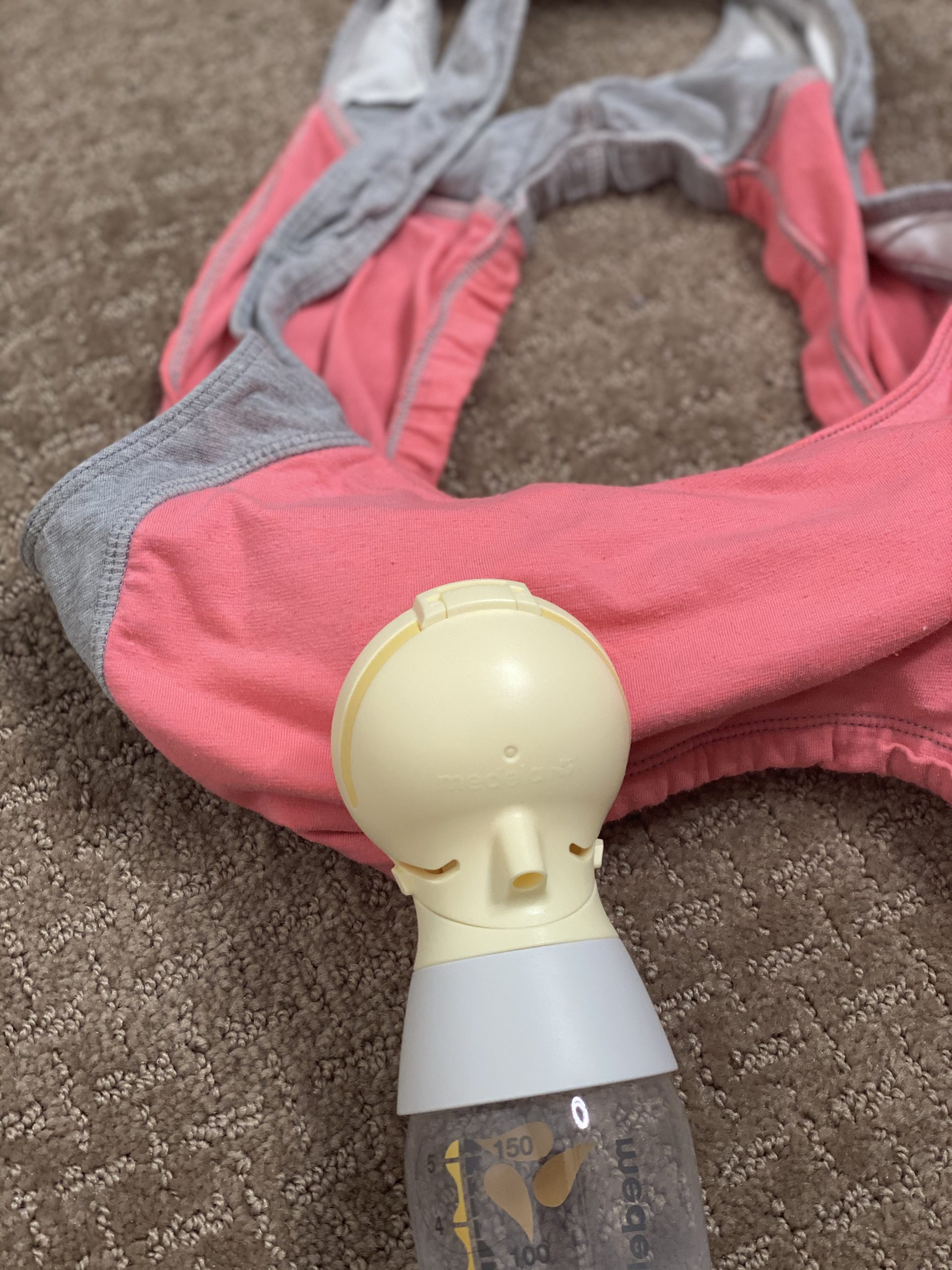Do you have to stop breastfeeding? Perhaps your baby recently weaned. Or maybe you don’t even want to breastfeed! This guide has got you covered with methods on how to dry up milk supply safely and in a pain-free manner.
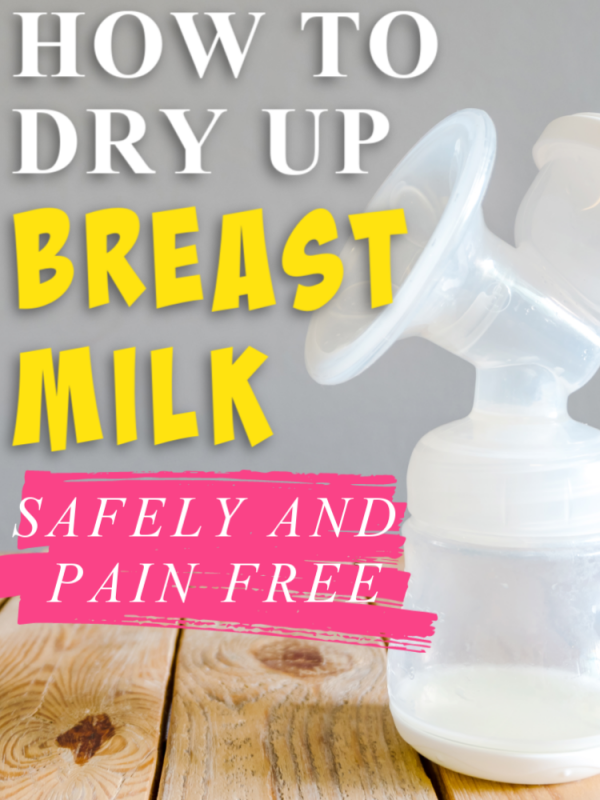
At some point or another, breastfeeding comes to an end.
For some of you, your milk will just gradually dry up and you won’t need to do anything to speed the process along.
However, for others, it may take a little bit more time and effort.
In this article, I will be sharing everything you need to know about drying up your milk.
First Steps
If you need to dry up your milk supply, there are various ways to go about it. Here are a few steps I would take first.
- Contact a lactation professional to help you navigate your specific circumstances (book a virtual consult here).
- Determine how quickly you want/need to dry up your milk – this will guide you toward the treatment that will work best for you
- Slow down nursing or pumping – if you haven’t stopped already, I would strongly recommend not stopping cold turkey in order to prevent engorgement, clogged ducts, and mastitis.
When I work with moms to dry up milk supply, we generally come up with a plan to stop pumping/nursing, comfort measures, and a timeline based on their situation.
Natural Ways to Dry Up Milk
Of course, people always want to know some natural solutions (which is great!). Here are a few things that can assist with that.
Consume Anti-Galactagogue Herbs
There are certain herbal supplements that are considered anti-galactagogues. These include:
- Peppermint
- Sage
- Parsley
- Jasmine
These can be taken in any of their various forms – teas, in food, or even as an essential oil. I know people who have mixed peppermint oil with a carrier oil or lotion to rub it on the breasts to decrease supply.
This peppermint roll-on is a good option. I highly recommend essential oils from Rocky Mountain Oils.
Additional Reading: Essential Oils for Breastfeeding: What’s Safe, What’s Not – Everything You Should Know
Milk Drying Up tea
There are teas designed to help dry up milk supply. While I can’t attest to their effectiveness, they are an option. Here are a few popular brands on Amazon:
Frozen Cabbage Leaves
This is a pretty common technique for drying up or reducing milk supply. You can put these in the freezer and then place them on your breast. There is a study that discusses about the effectiveness of cabbage leaves on engorgement that showed positive results, however, it was specifically studying the impact on engorgement,not drying up milk.
Medications for Drying Up Breast Milk
There are some medicinal ways to dry up breast milk. While some of these are over the counter, you should ALWAYS consult with your medical professional before doing any of these.
Antiprolactin Medications
In the past, women were given certain prescription medications to dry up their milk supply or even prevent it from coming in.
However, these are typically no longer prescribed because of potentially dangerous side effects and their high doses of estrogen.
Two medications that are *sometimes* still prescribed are bromocriptine or cabergoline. This is typically a last-case scenario. These are typically used for reducing breast milk in the early postpartum stages.
Birth Control Pills
Women who are breastfeeding typically are not supposed to take birth control medications that contain estrogen, because it can cause you to dry up or have a big drop in milk supply. Sometimes, they will be prescribed for moms who are having trouble drying up.
additional reading: Birth Control When Breastfeeding: Everything You Need to Know
Decongestants
Breastfeeding mothers are also told not to use decongestants – because they not only dry up their sinuses, but they dry up their milk. Some mothers have success with taking these to dry up their milk. Sudafed is a pretty popular one to try.
Reasons for Drying up Milk Supply
There are many reasons why a person may want to dry up their milk supply. Here are some of the most common.
Drying Up Milk After the Child has Stopped Nursing
When it comes to weaning, I always recommend a slow and easy approach. I nursed into toddlerhood, and we did a “don’t ask, don’t refuse” approach.
This is what I did with both of my boys, and when they had their final day of nursing, I didn’t notice any engorgement or leakage.
When you wean slowly, your body is given a little bit of time to adjust to the new supply and demand, which is why people generally have less problems.
Is weaning totally overwhelming you? Be sure to grab our popular workshop – Weaning Made Easy. You deserve to have a positive end to your breastfeeding journey!
You don’t want to breastfeed from the start
Regardless of your plans to breastfeed or formula feed, your body is designed to initiate lactation as soon as the placenta is expelled from the uterus.
I talked about this in the past in this post – When Does Milk Come in? – but it is a very biological process. Even if you don’t stimulate the breast, once that placenta is out of your body, your body (in almost all situations) will start to produce milk.
However, according to Kelly Mom, women who frequently latch and do skin-to-skin in those first few days have higher milk production on days 3 and 4.
But the question is, how do you suppress lactation when you don’t want to breastfeed from the start?
Well, first off – don’t pump or latch the baby! If the breast doesn’t get stimulation, it will produce PIF (prolactin inhibiting factor), which tells the body that milk isn’t needed (source).
But still, you may still have some milk coming in for a while.
There are several suggestions that you can do right after birth:
- Wear a supportive bra – Kindred Bravely is one of my favorite brands for newly postpartum mothers
- Put cold cabbage leaves in your bra
- Use cool compresses/ice packs to relieve pain
- Talk to a doctor or lactation consultant about using Advil or Tylenol to relieve pain.
- Do not pump! If you are super uncomfortable, hand express gently (here are some good tips on how to hand express) – pumping or hand expression will stimulate production, so just be careful!
If you have problems, working with a lactation professional can be a good course of action.
Pregnancy/Infant Loss
In the case of a pregnancy or infant loss, drying up milk can be important for some mothers. While some may choose to continue expressing breast milk in order to donate milk, this is a very personal decision. For many, continuing to produce breast milk is a difficult reminder of their lost child.
This article talks more about Lactation after Loss: What Bereaved Mothers Should Know.
Lower Oversupply of Milk
Oversupplies can have some rather uncomfortable side effects.
I often see women who say they are jealous of women with oversupplies…but I think the women who have had major issues associated with them will tell you it’s not a great situation to be in!
Some of the downsides to an oversupply?
- Increased risk of clogged ducts and breast infection called mastitis
- Fast letdown – which can make it harder for baby to eat, increase the chance of reflux and may increase gas in your baby
- Sore nipples
- Painful letdown
- Excessive leaking
If you are struggling with an oversupply and want to get it under control, again, I would first suggest working with an IBCLC. But here are a few common suggestions:
- Block Feeding – this is the most common approach. Essentially, try limiting the baby to one breast each feeding. If you have an oversupply, one side should have plenty of milk. You should allow the baby to nurse as long as they want on that side but just limit it to that one side and try to feed every two hours or so.
- Laid Back Nursing – if your oversupply is causing a fast letdown, and in turn, causing your baby discomfort or to have trouble eating. Sometimes, an oversupply can be due to a baby not having a good enough latch, thus not transferring enough milk, and this can be a more natural way for baby to latch.
Here is a great resource about oversupplies, the problems associated with them, and what to do
Ways to Ease Engorgement and Pain While Drying Up Milk
- Have a well-fitting and supportive bra. However, you should not bind your chest, as this can encourage clogged ducts.
- Cold Cabbage Leaves on your breasts are a popular remedy
- Cold compresses (heat may temporarily help the pain, but it encourages milk flow, so try to avoid the heat). I always like the Lansinoh therapearls – you can make them hot or cold, and they fit snuggly inside your bra.
- Tylenol or Advil can help relieve any pain or discomfort
- Gentle massage – breast gymnastics is a great technique during this time
What to avoid while drying up breast milk
When you are trying to dry up your milk supply, there are a few things you should try to avoid. Unfortunately, these are some things that may temporarily help with pain, but they can just make the process a lot longer and drawn out.
- Long, hot showers – heat encourages milk flow, and long exposure to heat while drying up your milk will end up hurting you more than helping.
- Pumping – it can be really tempting to pump to relieve pressure, but this just tells your body to keep pumping. You can hand express a little bit, which can be gentler.
- Massage – again, this is just another way to encourage milk flow.
How Long Does it Take to Dry Up Breast Milk?
The process to dry up milk will vary from woman to woman. There are women who have reported being able to lactate for years after they last nursed!
While you may still produce milk for a while after you’ve gone through the process of drying it up, you should see an improvement within a few days or weeks – just depending on how long you’ve been nursing if you stopped abruptly, and how your supply was.
Personally, I weaned both of my boys very slowly, and it was pretty pain-free. However, if you were to suddenly go from nursing 10 times a day to not nursing at all, it’s going to take a lot longer to dry up.
If you find that you are leaking a lot, just use some nursing pads for a little while.
Drying Up Milk Quickly
We occasionally get questions in our breastfeeding support group on Facebook about drying up quickly.
While we suggest going slow, for some, this isn’t an option.
Some women have to wean abruptly for one reason or another, and it can be a very painful process.
If you have to dry up your milk supply quickly and as painless as possible, I would suggest working with your lactation consultant to come up with the best things to do.
Work with a Lactation Consultant
As always, I suggest working with a lactation consultant to come up with a plan for your situation – in-person help is ALWAYS best, especially as you try to decrease your supply or dry up your milk.
I strongly suggest this if you are just trying to manage an oversupply and not completely dry up – it can be a delicate situation that can go south quickly.
I would love to help you navigate this situation – you can book a virtual consult here.
Drying up breast milk can be a tricky situation to navigate. I hope that this article has given you additional resources as you go through this journey.



